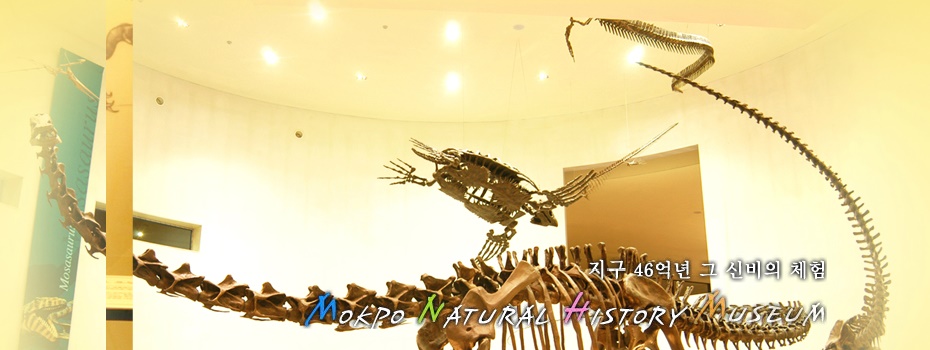Mokpo Natural History Museum is composed of modern exhibition facilities in alignment with the increased interest in the harmonious relationship between mankind and environment due to the continuing disturbance of the ecosystem and environmental destruction represented by global warming. The Museum is achieving advances into the status of a full-fledged international museum by collecting and exhibiting data and materials that can represent the history and cultures of the southwest regions as well as globally rare specimens of fossils of dinosaurs, minerals, insects, plants, birds, mammals, fishes and marine organisms that accredits the 4.6 billion years of history of the nature of our earth.
In particular, we are exhibiting the original "Fossil egg nest of carnivorous dinosaurs," which has been registered as Natural Monument No. 535 and state-designated cultural asset on June 27, 2012. This fossil was excavated in the process of geological survey of the areas (characterized as the ancient environmental zone in East Asia, which is a part of the land during the Cretaceous period of the Mesozoic Era) surrounding the site of construction of Aphae Bridge that connects Mokpo and Aphaedo Island in Sinan-gun in 2009, which is rare throughout the world and the first such fossil found in Korea.
In addition, the Museum exhibits more than 20,000 well-preserved specimens including original fossils such as the fossils of dinosaurs Prenoceratops and Conchoraptor, for which only 2 such fossils have been excavated throughout the world, and rare marine reptiles, etc. that enables us to speculate the long history of earth.
In the Literature History Pavilion, it is possible to observe a diverse range of local cultures and history including the living art gallery of the Unlin Sanbang with the room for the display of works of arts over 4 generations and exhibition room for ornamental rocks, etc. Moreover, the Museum is also operating daily life ceramics product museum for the experiencing of the history of progress in the ceramic industry of the Jeonnam region including the area of the cutting edge ceramic industry, and the Oceanic Science Pavilion for Children of Korea opened on February 5, 2013.
Lastly, we are providing services of searching information on our collections through our website for your reference. We shall continue to put our utmost efforts to assist all the visitors to our Museum in acquiring the historical information and knowledge on nature more conveniently. We seek your continued advices and support.

